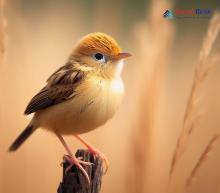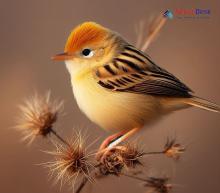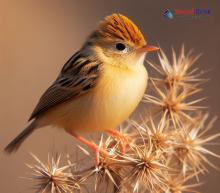Nestled within the lush landscapes of Nepal, the Cisticola genus is a fascinating group of small, vocal birds that has captured the attention of ornithologists and bird enthusiasts alike. As we delve into their evolution tree, taxonomy, and morphology, we will uncover what makes these chirpy creatures so unique and why their presence in Nepal plays a vital role in understanding their story.
Evolution Tree of Cisticola Genus
To fully appreciate the distinctiveness of the Cisticola genus, it's essential to examine their evolutionary history. As members of the family Cisticolidae - close relatives to other warblers and old-world flycatchers - these birds have undergone an intricate evolutionary process throughout millennia. The Cisticola genus comprises around 50 species divided into various subgenera based on genetic studies and biogeographic patterns. Understanding these relationships allows scientists to better comprehend not only the development of Cisticola species but also their adaptation strategies to diverse habitats.
Taxonomy and Morphology
Taxonomists work relentlessly to classify each species within the Cisticola genus accurately. Birds within this genus exhibit subtle differences in plumage, size, territorial behavior, and song patterns - factors that contribute to complex taxonomic puzzles. In order to appropriately classify these avian marvels, taxonomists collaborate with geneticists to decode each bird's DNA structure for clearer identification.
Studying the morphology of Cisticola species can provide valuable insights into each bird's niche within its habitat. For instance, some species boast long tails for improved aerial agility while others possess cryptic plumage patterns as camouflage against predators. Recognizing these adaptations enables researchers to comprehend how members of this genus have thrived across diverse ecosystems.
Presence in Nepal
As Himalayan hotspots like Nepal are home to many Cisticola species, it's vital to explore this region to advance scientific knowledge on these birds' distribution, habitat preferences, and ecological roles. Nepal offers unique biogeographical zones and habitat diversity where several Cisticola species flourish. Through intensive field research and technological advancements in tracking, we can gain a more comprehensive understanding of their interactions with the environment and guide conservation efforts to protect these remarkable birds. Some of the most notable species include:
1. Zitting Cisticola (Cisticola juncidis) - Also known as the Streaked Fantail Warbler, this well-known species exhibits a distinctive "zit-zit-zit" call and can be found in grassy areas near water sources.
2. Golden-headed Cisticola (Cisticola exilis) - Sporting a bright gold crown contrasting with a dark eyestripe, this striking bird inhabits open grasslands at lower elevations.
3. Gray-breasted Prinia (Prinia hodgsonii) - Although technically classified under a different genus (Prinia), Gray-breasted Prinia shares many characteristics with its Cisticola cousins and is often mentioned together. It thrives in grasslands, scrubland, and open woodland areas.
In conclusion, the captivating world of the Cisticola genus invites bird enthusiasts, ornithologists, and evolutionary biologists to unravel its multifaceted tales. By examining their evolution tree, taxonomy, and morphology while keeping a keen eye on their presence in Nepal, we not only learn about these tiny creatures but also gain crucial knowledge that can aid in their conservation for future generations to enjoy.




